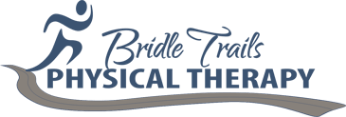Does this scenario seem familiar? You’re walking down the sidewalk, when suddenly – your ankle slips off the curb. You feel an immediate twinge of pain, but you’re unsure whether or not it requires a trip to the doctor.
It is true that many mild injuries can be treated with the R.I.C.E (rest, ice, compression, elevation) method; however, some injuries require the help of a medical professional.
It can be difficult to determine where your injury is, and it can also be difficult to determine if the injury you sustained is a sprain or a strain. Fortunately, consulting with a physical therapist at Bridle Trails Physical Therapy help you get everything sorted out as quickly as possible, so you can recover and get back to your daily life!
What’s the difference between a sprain and a strain?
One of the first and most common questions people ask when they hurt a part of their body: is it a sprain, or is it a strain? While they may seem similar, the distinctions are actually easier to make than you may think. In order to know the differences between a sprain and a strain, you must first know the differences between a tendon and a ligament.
Tendons are fibrous, tough structures that connect bone and muscle. Ligaments are connective tissues that are similar to tendons, except they connect bone to bone rather than muscle to muscle.
When the tendons that connect your muscle to your bone are stretched or ruptured, a strain ensues. A strain can be acute, meaning it occurs right after an accident, or chronic, meaning it develops over time as a result of repeating the same repetitive motions over and over again.
A sprain occurs when the ligaments connecting your joints are damaged. This can affect your ankles, knees, elbows, or wrists. With a sprain, the joint is so violently twisted that the tissues are stretched or torn. The pain may be mild, subsiding in a few minutes or hours, or it can be more severe, requiring physical therapy or even surgery.
So, what can physical therapy do to help?
Our physical therapists have a lot of experience with sprains and strains, both diagnosing and treating them. Your physical therapist will assist you in recovering from your injury and will give you advice on how to avoid further injuries in the future. Physical therapy treatments can often eliminate the need for dangerous medicines or invasive surgical repairs.
When treating a sprain or strain with physical therapy, 3 steps are typically followed.
- Your physical therapist will focus on pain relief. This is done with passive physical therapy methods, including manual therapy, ice and heat therapies, light stretches, ultrasound, or electrical stimulation.
- Your physical therapist will focus on promoting the healing process of your injury once your discomfort has been addressed. This will include strengthening and range-of-motion exercises to help the damaged area regain its full function.
- Following the healing of your injury, your physical therapist will focus on preventing injury in the afflicted area in the future. This will be accomplished through focused strengthening workouts that will help you build muscle around the injured area and lower your chance of re-injuring it.
Ready to get back on your feet? Give our clinic a call
Do you think you may have a sprain or strain? If so, contact us today for assistance with returning to the things you love doing.
We’ll provide you with the best treatment methods for your needs, so you can relieve your pain without the use of harmful medications or expensive surgical procedures. We are here to support you every step of the way!
Sources:
- https://www.mayoclinic.org/diseases-conditions/sprains-and-strains/diagnosis-treatment/drc-20377943
- https://medlineplus.gov/sprainsandstrains.html
Tags: Physical Therapy treatment, Sprains and Strains, physical therapy, physical therapist, physical therapy clinic



